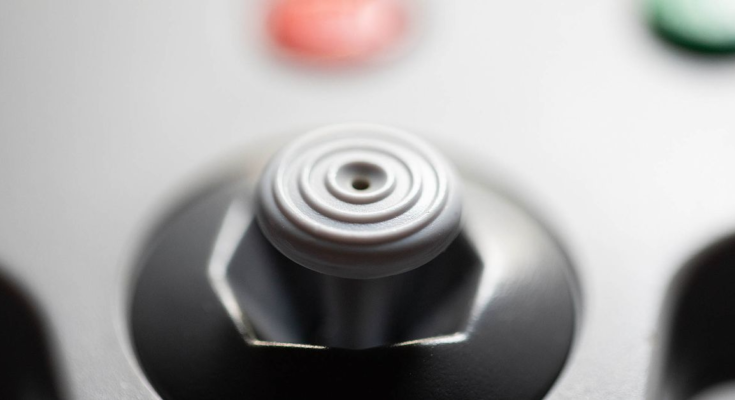In the annals of gaming history, there’s no controller better known than the three-pronged piece of plastic that shipped with the Nintendo 64. That’s likely for a few reasons. There’s the unique design, which renders it instantly and unmistakably recognizable as the N64’s gamepad. There’s the popularity of the console, which helped cement Nintendo as one of the definitive names in gaming.
But the most important part of the N64 controller isn’t the design or the box it attached to: it was the joystick, which introduced millions to a new way of controlling games and paved the way for modern 3D gaming that’s virtually standard today.
Nintendo didn’t invent the joystick or the idea of using it for games, but it did popularize the joystick as a default control option for mainstream 3D games in a way that no one else had done before. Prior to the N64, joysticks were limited largely to flight simulator enthusiasts looking for the most realistic platform to mirror actual flight (although earlier consoles like the Atari 2600 did feature a joystick input, albeit for 2D gaming.) But the N64 controller offered a joystick as the main control scheme for every type of game and placed it front and center in players’ hands.
:no_upscale()/cdn.vox-cdn.com/uploads/chorus_asset/file/22756844/akrales_210716_4639_0018.jpg)
One reason for that decision was the shift to 3D gaming, a change Nintendo helped usher in with the N64. Moving around a polygonal three-dimensional world meant players needed the ability to navigate more freely than what a traditional D-pad (designed for grid-like pixels on past consoles) would allow. It’s something reflected in my favorite design cue of the N64 joystick: the octagonal well it rests in, which subtly cues players toward the eight cardinal directions they can tilt the stick and subsequently move their character on-screen. (It’s also a detail Nintendo stuck with on its succeeding consoles up until the Wii U.)
But the magic of the N64’s controller is how Nintendo used the design to teach players how to use the new joystick and navigate in new planes. The strange-looking third controller grip allowed the N64 controller to be held on the two outside grips like a “regular” controller, but the center-mounted stick encourages players to view it as the primary control scheme. And the textured rubber grip rests naturally under your thumb, making it easy to tilt it in any direction.
The joystick also allowed for more subtle movement than a traditional D-pad. In Super Mario 64, players are introduced to the idea that they can push the joystick hard to run but tilt it lightly to walk. Later on in the game, they can even use it to fly freely in three dimensions.
:no_upscale()/cdn.vox-cdn.com/uploads/chorus_asset/file/22756843/akrales_210716_4639_0016.jpg)
The hardware had issues. The mechanism was prone to wearing out and loosening over time, requiring that they be properly maintained, lubricated, and replaced. But it’s important to remember that it was also a first-generation product, released at a time when Nintendo’s biggest competitors, the original PlayStation and Sega Saturn, only had shipped with old-fashioned D-pads. (Both would later release controllers with joysticks after the N64 was released.)
The N64 controller is also very clearly a transition point. Its design looks almost like an SNES controller grew some extra appendages, and the direction pad and face buttons still easily allow for developers and players who were uneasy about the new control scheme to avoid it. There was only the single analog stick, making camera control a frustration in some games.
It wouldn’t be until Sony released the Dual Analog Controller in 1997 that the modern double-analog stick design that’s still used on virtually every major controller and gamepad today would arrive. Even Nintendo would go on to offer its own version of PlayStation’s face button / D-pad / dual-stick / triggers layout with the GameCube, the Wii Classic controller, the Wii U, and the Switch.
But the N64’s lone joystick was a starting point, a bridge from the pixelated consoles of the past to the ultra-powerful PlayStations and Xboxes we have today — teaching generations of players a new way to think about gaming and moving in a digital space.
Update August 30th, 12:30pm: Added mention of the Atari 2600 as predating the Nintendo 64 for console joysticks.



